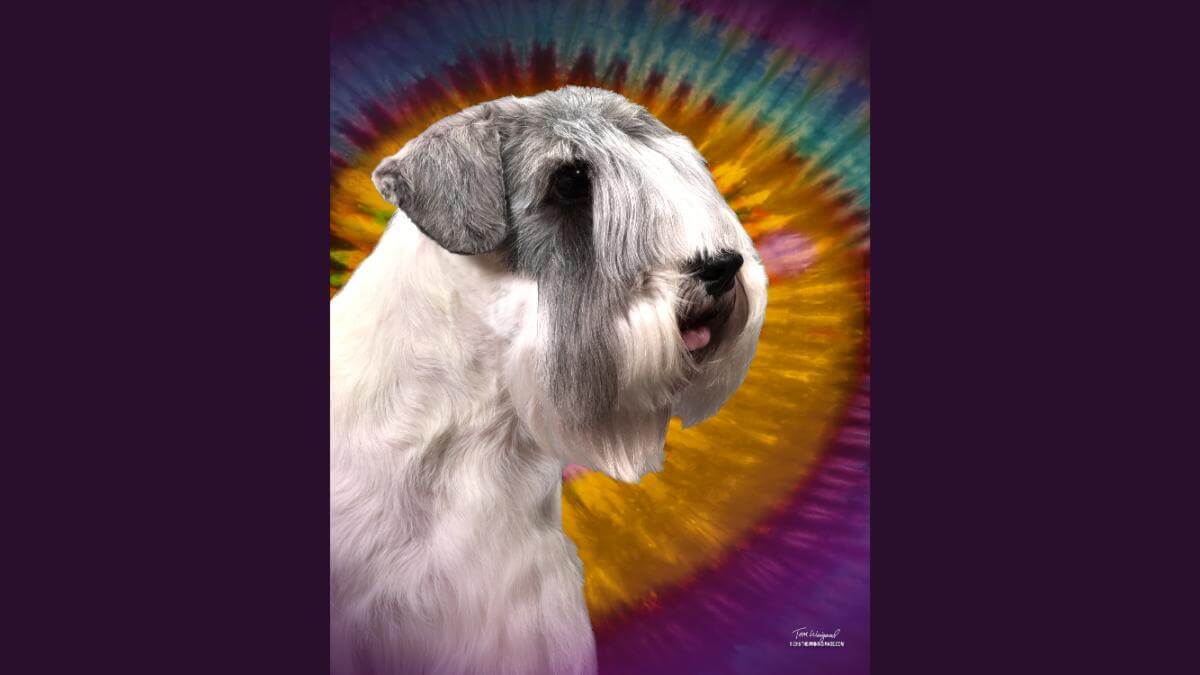


Home » A Note on the Sealyham

This article was originally published in Showsight Magazine, November 2013 issue.
Fifty years ago, In the early 60s, the old Dog World magazine did a survey concerned with the decline of the Sealyham Terrier. Results were gathered from pet and commercial breeders, breeder/exhibitors, veterinarians, and groomers, and all responses included one major drawback to the breed: Maintenance. Te survey fell on deaf ears. A few years earlier I had an opportunity to do my own limited “survey” with the same results. In 1959, an aspiring judge imported a Polrose dog to add to his ownership record with the American Kennel Club. Unfortunately, but typically, the dog had a coat of wool. Te well known handler in the Rocky Mountain area sprayed the coat with stale beer, added cornstarch and thus created his dog’s show coat. Handler and dog won nine groups. Te handler had seven Sealyham bitches on his property—and soon the local “wool explosion” in coats was observed. Time went by and the group winning stud dog was retired and the handler’s attention was directed to other terrier breeds. Te handler asked me to clean up the Sealyham.
I did, and I used a 10-blade clipper to remove the dog’s entire coat in one piece—an almost complete outline of the dog’s body, head and legs. I hung the “pelt” of matted wool in the window of my grooming shop and was accused of skinning a dog! To bring us up to date, you must learn of two families who have been most loyal to the Sealyham. Mr. and Mrs. Sharp had Sealyhams for more than three decades; they assisted with rescue dogs, cared for their own pets in good and bad health, and found the breed to be a fascinating and favorite breed. Tey have lost their last Sealyham and it was replaced with two rescue dogs, Great Pyrenees. Te two giant dogs are much easier for them to care for, maintain and keep looking like the attractive dog they are intended to be. But they still miss their Sealyhams. In another home, Lloyd and Carol Stark bred and showed winning Sealyhams and their devotion to the breed was unsurpassed. Tey cared for three rescue Sealyhams with problems and nursed them back to good health and happy temperaments. Years have gone by and they now provide a home for seven well-trained, affectionate house dogs of various breeds, but no Sealyhams.
Te on-going maintenance of the coats proved to be too time-consuming in their busy world. Tey still miss their Sealyhams. Pay attention to these true stories. A few years ago I saw a harsh coated Sealyham bitch at Montgomery County with a well-known and successful breeder. Her profile was correct and the bitch displayed all her assets in the silhouette, as opposed to abundant furnishings that provided no distinct Sealy outline. The breeder had not entered the Sealy, convinced that the judges only like “pretty.” It was Oppenheimer who believed that a dog with no apparent faults, but with no assets for the breed, is a faulty dog. What would he think about a breed in which a serious fault predominates throughout all breeding? It’s time to move on; breed to the best coat you can find. A good breeder will not allow a major fault to destroy a breed and will instead breed for the positive, sometimes sacrificing certain elements in order to save others. Wake up. It is time to breed for the preservation of the Sealyham Terrier.